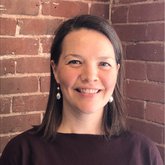Progress and Barriers Bringing Palliative Care to Medicare Advantage Populations
As a nurse practitioner in palliative care, I am excited. The Center to Advance Palliative Care (CAPC) and End-of-Life Nursing Education Consortium (ELNEC) both celebrate their 20-year anniversaries this year.
Today, almost three quarters of U.S. hospitals with fifty or more beds report having a palliative care team. ELNEC has trained over 24,000 nurses in train-the-trainer courses. Integrated health care systems such as Sutter are demonstrating savings from their advanced illness management programs of $8,000-$9,000 per patient per year. The Center for Medicare and Medicaid Innovation’s Alternative Payment Models are getting closer to finally recognizing that palliative care is a valuable investment.
In another incredibly positive sign, CAPC hosted an invitation-only Medicare Advantage (MA) Learning Community on Sept 25th, in collaboration with the Alliance of Community Health Plans and funded through generous support from the Commonwealth Fund, The John A. Hartford Foundation, the Gary and Mary West Health Institute, and the Peterson Center on Healthcare. I was honored to attend along with leadership from more than twenty MA plans, to represent the work we are doing at Cyft to help scale access to palliative care.
The goal of the event was to kick off a peer learning program that brings payers together who are grappling with how best to improve access to palliative care for MA members, brainstorm solutions, and share best practices.
Here are the challenges (a.k.a., opportunities for progress) that received the most attention by attendees:
Identified Challenges
Identifying patients remains a challenge. Research has shown that clinical judgment (i.e., the surprise question) is not accurate and becomes even less reliable with greater familiarity between patient and provider. Existing claims-based algorithms do not reliably predict palliative care needs. Rules-based algorithms designed specifically for mortality prediction fall short.
We were invited to share some of our lessons learned with patient identification. We shared that lists should identify those most likely to benefit (not just predicting mortality). This involves predicting impending preventable events, such as inpatient admissions and emergency department visits. Use of more than just claims data is crucial. Efforts should be made to reduce false positives and eliminate those that clinical teams already know about. The list must be seamlessly integrated into clinicians’ workflow and actually lead to enrollment in the program. Otherwise it’s just another thing getting in clinicians’ way.
Engaging clinicians and training them in assessment and serious illness conversations, among other needed skills. There aren’t and won’t be enough specialty palliative care clinicians to meet demand. Just like we have come to embrace patient safety being everyone’s responsibility in health care, it is imperative that all clinicians see themselves as having a role in delivering basic pain and symptom management, as well as effective communication with patients with serious illness. It is important that they have the training and comfort level to do so effectively. This includes everyone from nurses, social workers, and physicians in primary care clinics to care managers at health plans, to clinicians in specialty offices (cardiology, oncology, pulmonology, etc.). This clinical training is available through CAPC's online curriculum, with free continuing education credits and ABIM MOC points for physicians.
Designing home-based services. Despite huge successes implementing palliative care in inpatient settings (see CAPC’s hot-off-the-press report), there is much work to be done to expand into people’s homes. This is entirely dependent on: 1) the ability to identify the population in need in a timely manner; 2) sufficient payment with concomitant standards and; 3) deploying a workforce well equipped to provide the necessary care. We’re seeing novel models and both new and established organizations moving into this space, from startups to community-based hospice agencies expanding their offerings.
Changing culture. None of this can happen without continuing to shift culture. There is already incredible competition for the limited attention of executives and clinicians. Palliative care has come a long way, yet still suffers from unfortunate misperceptions. Continuing to engage with the public, patients, clinicians, and payers to dispel myths and share success stories will be incredibly important.
Ongoing Measurement. Quality assurance is an important part of an MA plan’s efforts to improve care for enrollees with serious illness, and we’re seeing it become an issue in early pilot programs. To be successful, teams need a way to monitor what’s happening -- not at the end of the year, but as the program rolls out. Are identification lists working? Are clinicians engaging patients? Are there clinicians that are having more or less success that need our help? Is the program making a difference? Arriving at shared ways of measuring value compared to a rigorous control group will need to be solved. I was also able to get good feedback on a sample palliative care report that Cyft is using.
A Path Forward
Despite the challenges ahead, I left Chicago feeling incredibly inspired by this group of passionate, dedicated change agents. Even in markets where the same plans are “competing” for members, there was a genuine willingness to share – both their successes and their struggles – and to learn, give feedback, and innovate.
Thanks again to CAPC, ACHP, and the four funders for leading this important push toward scaling palliative care.
